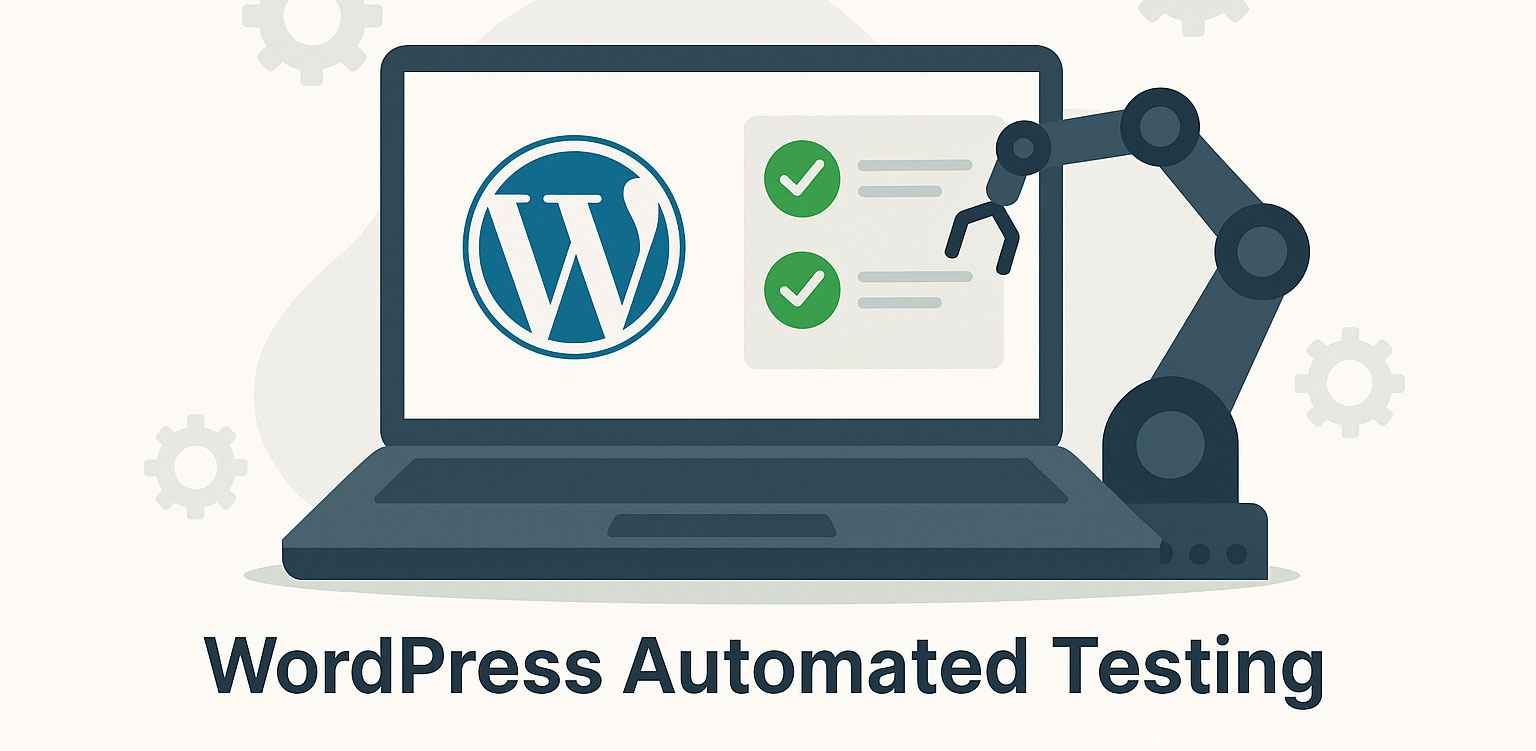
Published February 21, 2025
Why Automated Testing Matters for WordPress Sites (And How to Actually Get Started)
When most people think about testing websites, they picture a developer manually clicking through pages, hoping to catch something broken before it goes live. For WordPress, that approach might work—for a while. But as your site (or your client list) grows, manual testing becomes a bottleneck. Worse, it leaves plenty of room for error.
That’s where automated testing comes in. And no, it’s not just for enterprise SaaS apps or teams with five full-time QA engineers. Whether you’re managing one WooCommerce store or a dozen client sites, automated testing can give you peace of mind, and platforms like CheckView make it surprisingly accessible.
🚨 Why Manual Testing Isn’t Enough
WordPress is powerful but also fragile. One plugin update, a JavaScript conflict, or a broken shortcode can silently wreck a critical feature. And in most cases, you don’t notice until a customer does.
Manual testing:
- Takes time
- Is hard to scale
- Gets skipped when deadlines get tight
- Doesn’t guarantee coverage across every page or user path
Even if you test a feature once after a deployment, what happens when another plugin updates automatically at midnight? You won’t know it broke anything until your client emails you… or worse, loses sales.
✅ What Is Automated Testing?
At a basic level, automated testing is the practice of using bots or scripts to simulate user behavior and validate functionality on your site.
In the WordPress world, this might mean:
- Clicking through the WooCommerce checkout flow
- Filling out a Gravity Form
- Logging into a membership dashboard
- Verifying that a custom post type still displays properly
With tools like CheckView, you can define these user paths once, and then run them automatically every day (or after any update).
🔧 Types of Automated Testing for WordPress
There are several types of testing developers use—some technical, some visual. Here’s a quick breakdown:
1. Unit Testing
Mostly for plugin and theme developers. These tests check PHP functions in isolation.
2. Integration Testing
Verifies that different parts of the site work together. For example, a contact form sending to Mailchimp.
3. End-to-End (E2E) Testing
Simulates real user behavior, like adding a product to cart and checking out. This is where CheckView shines.
4. Visual Regression Testing
Checks whether layouts, fonts, or colors unexpectedly change, great for theme developers and designers.
🚀 Getting Started with Automated Testing in WordPress
If you’re not a developer, don’t worry. You don’t need to install PHPUnit or spin up Docker containers just to test your contact form.
Here’s how to get started quickly using CheckView:
Step 1: Create Your Test Flow
Start by selecting your site, then create a flow that mimics how a user might:
- Navigate to your homepage
- Click into a product
- Add it to the cart
- Fill out billing details
- Submit a form or place an order
Step 2: Set Up Daily or Post-Update Checks
Schedule tests to run every day or after key site changes. You’ll get alerts the moment something breaks, before your users ever notice.
Step 3: Watch the Video Replays
CheckView records every step. If something fails, you can instantly see what happened and where.
🛠️ Bonus: Test Critical Features, Not Just the Homepage
Too many site owners only test what’s visually obvious. Focus your test coverage on:
- Checkout flows
- Payment methods
- Form submissions
- Login and account pages
- Membership or eLearning access
These are the money-making parts of your site, and where breakage hurts most.
👋 Final Thoughts: It’s Time to Test Smarter
You don’t need a DevOps team to benefit from automated testing necessarily. With the rise of tools like CheckView, you can test your site like a pro, without writing a single line of code.
It’s one of the smartest investments you can make for your site’s stability, especially if:
- You manage multiple clients
- You run a WooCommerce store
- You rely on forms, logins, or user workflows
Want to see it in action? Start testing with CheckView—we’ll walk you through your first flow in minutes.